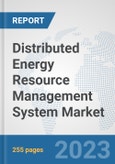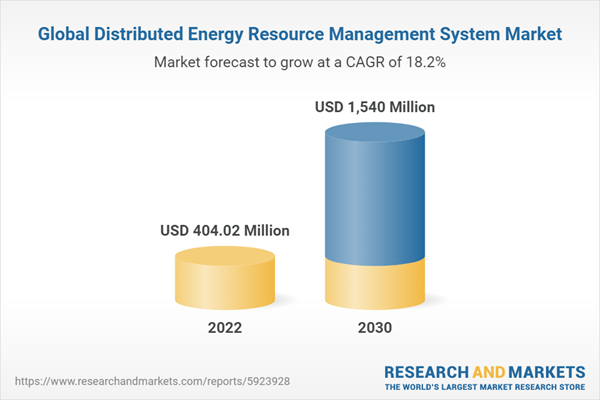A Distributed Energy Resource Management System (DERMS) is a pivotal technology for businesses seeking efficient energy utilization. This integrated platform enables seamless control and optimization of diverse energy sources, such as solar panels, wind turbines, and storage systems. DERMS empowers businesses to intelligently manage energy generation, consumption, and storage across distributed assets, fostering grid resilience and reducing operational costs. By providing real-time monitoring and predictive analytics, DERMS ensures optimal performance, mitigates grid congestion, and enhances overall energy reliability. This technology aligns with sustainable business practices, allowing enterprises to leverage renewable resources effectively and contribute to environmental goals. The market's growth is fueled by the increasing adoption of renewable energy sources and the demand for streamlined management of distributed energy resources. As industries embrace sustainable practices, DERMS emerges as a key player in orchestrating and optimizing the integration of diverse energy assets, contributing to a more resilient and sustainable energy landscape.
The surge in demand for clean and sustainable energy solutions propels the growth of the Distributed Energy Resource Management System (DERMS) market. Businesses are increasingly adopting DERMS to optimize the integration of diverse energy sources, enhance grid resilience, and meet sustainability targets. With a rising emphasis on carbon reduction and energy efficiency, DERMS facilitates intelligent control of distributed assets, driving the market forward. Regulatory incentives and the imperative to reduce reliance on traditional energy grids further accelerate DERMS adoption. As businesses prioritize environmental responsibility, DERMS emerges as a key driver in reshaping the energy landscape toward a more sustainable future. Additionally, the increasing adoption of renewable energy sources and the imperative for grid modernization. As businesses strive to meet sustainability targets and reduce carbon footprints, DERMS serves as a critical enabler by optimizing the integration of renewable assets. Moreover, the growing complexity of energy grids, coupled with the rise in distributed generation, elevates the need for advanced management solutions. DERMS offers businesses a strategic tool to enhance grid reliability, optimize energy use, and adapt to evolving regulatory landscapes, making it a key driver in the pursuit of a resilient and sustainable energy future. However, integration challenges and interoperability issues pose significant restraints for the Distributed Energy Resource Management System market. Furthermore, the growing demand for decentralized and sustainable energy solutions presents a significant opportunity for the expansion of the distributed energy resource management system market.
North America is projected to hold the most prominent market share in the upcoming forecast period. The region's supremacy is attributed to a confluence of factors, including a robust adoption of renewable energy sources, government incentives promoting clean energy initiatives, and a well-established grid infrastructure. With a heightened focus on grid modernization and resilience, businesses in North America are increasingly investing in DERMS to optimize the integration of diverse energy resources. Additionally, the region's supportive regulatory environment and proactive approach toward sustainable energy practices position North America as a key player in driving the growth of the DERMS market. Moreover, Asia-Pacific stands out as the fastest-growing region for the Distributed Energy Resource Management System (DERMS) market in the forecast period. The region's rapid economic growth, coupled with increasing urbanization and a strong emphasis on sustainable energy solutions, is driving the adoption of DERMS technologies. Governments across Asia-Pacific are actively promoting renewable energy integration, leading to a surge in distributed energy resources. Additionally, the need for efficient grid management and the rising awareness of environmental concerns are propelling the demand for DERMS solutions. With a conducive regulatory environment and a focus on clean energy, the Asia-Pacific region offers a fertile ground for the accelerated growth of the DERMS market.
Report Findings
1) Drivers
- The surge in demand for clean and sustainable energy solutions propels the growth of the Distributed Energy Resource Management System (DERMS) market.
- The increasing adoption of renewable energy sources and the imperative for grid modernization is propelling the growth of the market.
2) Restraints
- Integration challenges and interoperability issues pose significant restraints for the distributed energy resource management system market
3) Opportunities
- The growing demand for decentralized and sustainable energy solutions presents a significant opportunity for the expansion of the distributed energy resource management system market.
Research Methodology
A) Primary Research
The primary research involves extensive interviews and analysis of the opinions provided by the primary respondents. The primary research starts with identifying and approaching the primary respondents, the primary respondents are approached include1. Key Opinion Leaders associated
2. Internal and External subject matter experts
3. Professionals and participants from the industry
The primary research respondents typically include
1. Executives working with leading companies in the market under review2. Product/brand/marketing managers
3. CXO level executives
4. Regional/zonal/ country managers
5. Vice President level executives.
B) Secondary Research
Secondary research involves extensive exploring through the secondary sources of information available in both the public domain and paid sources. Each research study is based on over 500 hours of secondary research accompanied by primary research. The information obtained through the secondary sources is validated through the crosscheck on various data sources.The secondary sources of the data typically include
1. Company reports and publications2. Government/institutional publications
3. Trade and associations journals
4. Databases such as WTO, OECD, World Bank, and among others.
5. Websites and publications by research agencies
Segment Covered
The global distributed energy resource management system market is segmented on the basis of based on the component, application, and end-use.The Global Distributed Energy Resource Management System Market by Based on the Component
- Software
- Analytics
- Management & Control
- Virtual Power Plant (VPP) Software
- Services
The Global Distributed Energy Resource Management System Market by Application
- Solar PV Units
- Wind Generation Units
- Energy Storage Systems
- Combined Heat & Power Generation Systems
- EV Charging Stations
- Others
The Global Distributed Energy Resource Management System Market by End-use
- Industrial
- Commercial
- Residential
Company Profiles
The companies covered in the report include- ABB
- Schneider Electric
- Siemens
- GE DIGITAL
- ENGIE
- ITRON
- Emerson Electric Co
- Oracle
- Mitsubishi Electric Power
- Spirae
What does this Report Deliver?
1. Comprehensive analysis of the global as well as regional markets of the distributed energy resource management system market.2. Complete coverage of all the segments in the distributed energy resource management system market to analyze the trends, developments in the global market and forecast of market size up to 2030.
3. Comprehensive analysis of the companies operating in the global distributed energy resource management system market. The company profile includes analysis of product portfolio, revenue, SWOT analysis and latest developments of the company.
4. Growth Matrix presents an analysis of the product segments and geographies that market players should focus to invest, consolidate, expand and/or diversify.
Table of Contents
Companies Mentioned
- ABB
- Schneider Electric
- Siemens
- GE DIGITAL
- ENGIE
- ITRON
- Emerson Electric Co
- Oracle
- Mitsubishi Electric Power
- Spirae
Table Information
| Report Attribute | Details |
|---|---|
| No. of Pages | 255 |
| Published | December 2023 |
| Forecast Period | 2022 - 2030 |
| Estimated Market Value ( USD | $ 404.02 Million |
| Forecasted Market Value ( USD | $ 1540 Million |
| Compound Annual Growth Rate | 18.2% |
| Regions Covered | Global |
| No. of Companies Mentioned | 10 |









